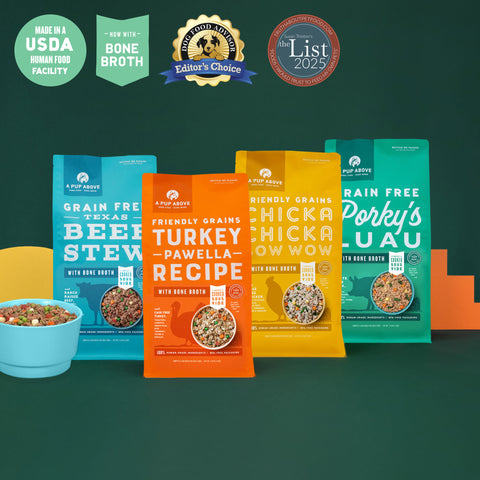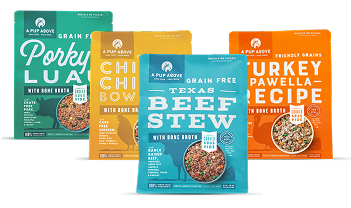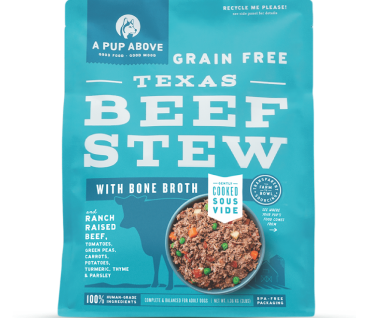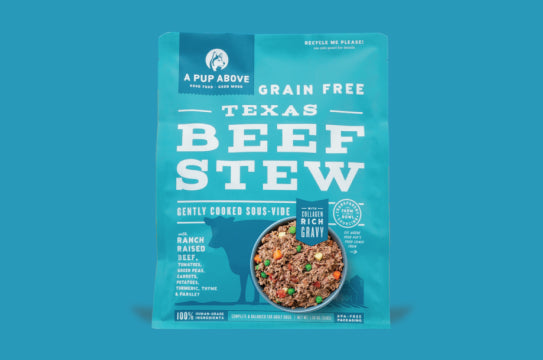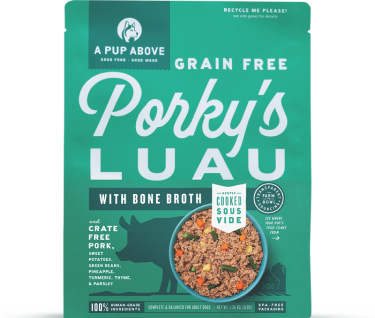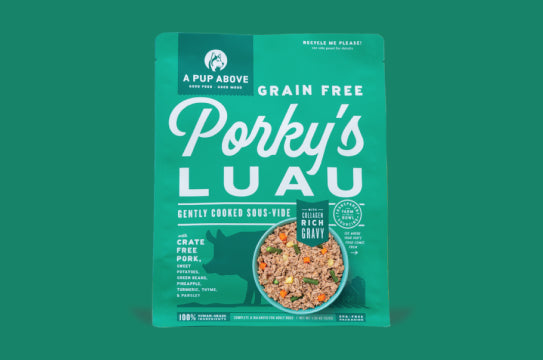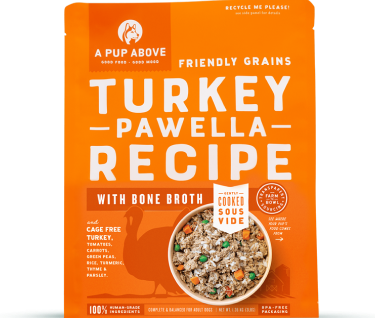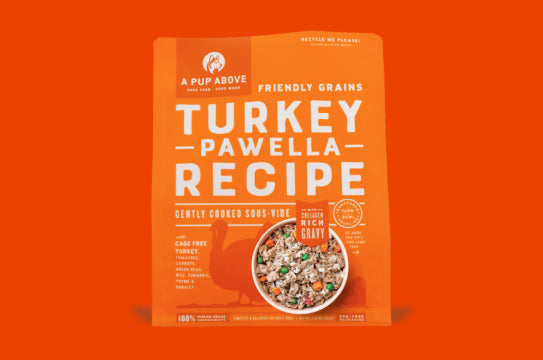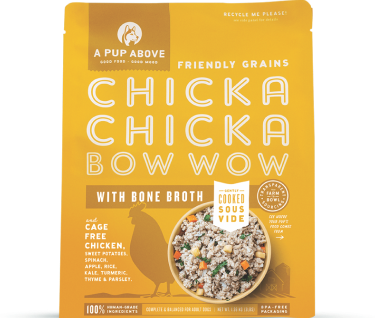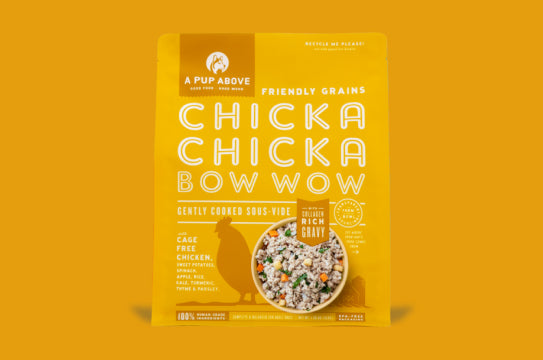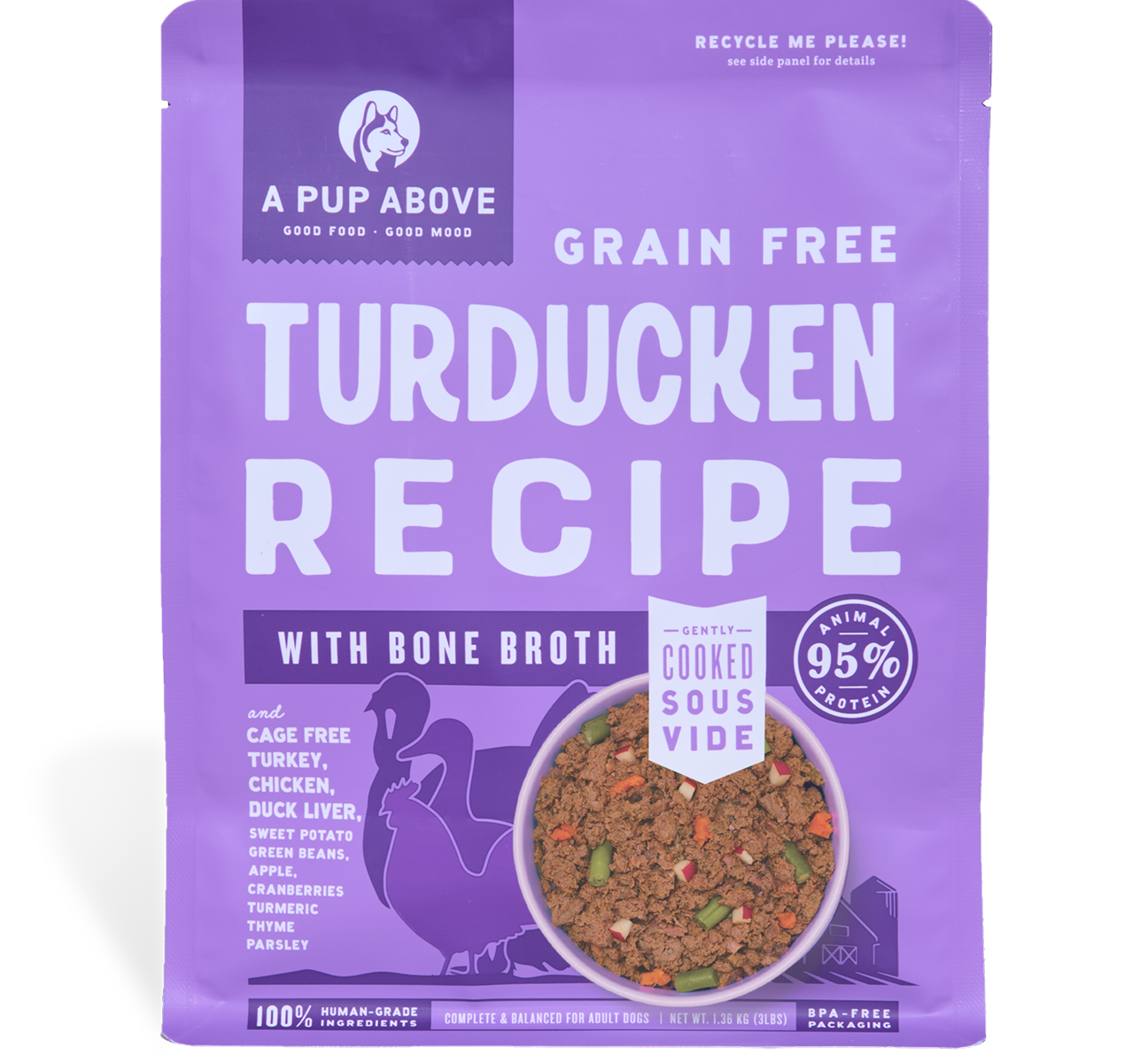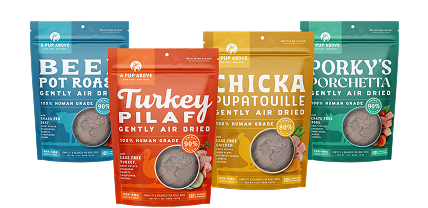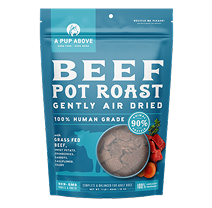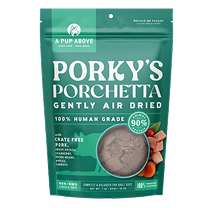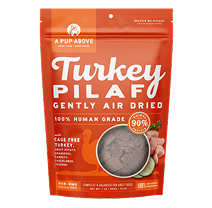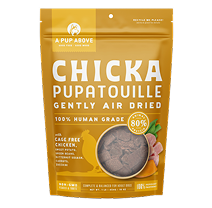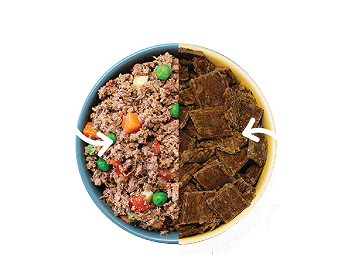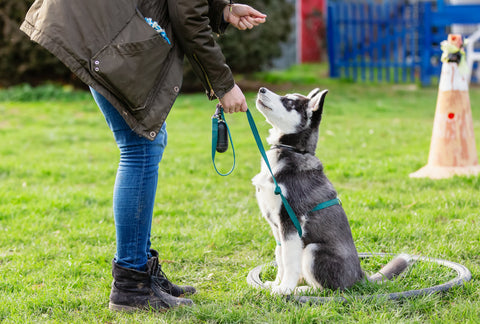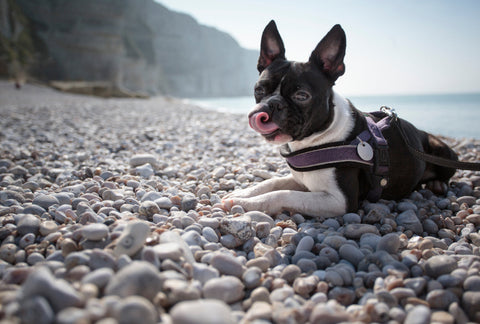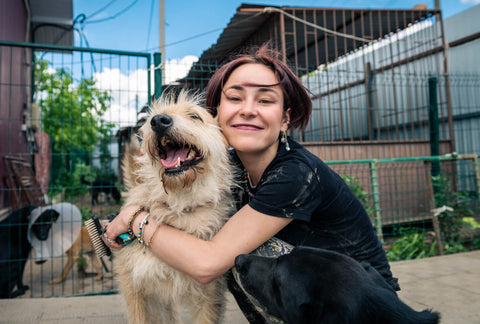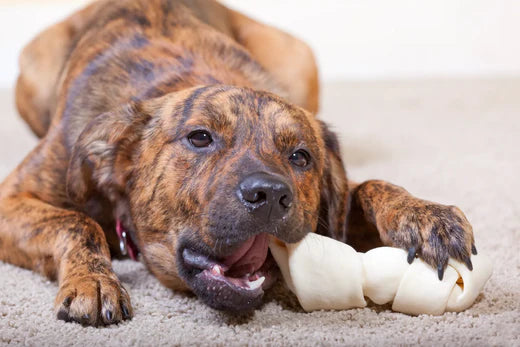
Is Rawhide Bad for Dogs?
If you’ve ever handed your pup a rawhide chew and thought, “This should keep them busy for a while,” you’re not alone. Rawhides have a way of turning even the most energetic dogs into focused, determined chewers. But as they gnaw away, you might wonder if these chewy treats are really as harmless as they seem.
At A Pup Above, we’re all about giving our dogs the best — treats included. So, let’s break down the rawhide hype and figure out if this classic chew deserves a spot in your dog’s snack stash.
Is Rawhide Bad for Dogs?
Before we get into the nitty-gritty, you might be wondering: What even is rawhide? It’s basically dried-out skin — typically from cows — that’s been cleaned, stretched, and rolled into those familiar chew shapes.
Sometimes, it’s flavored or dyed to look extra enticing. Dogs love it because it’s tough, chewy, and lasts forever (or at least until they’ve slobbered it to bits).
So, is rawhide bad for dogs? The short answer: It can be. While many pups can chew rawhide without any drama, there are some concerns that might make you think twice.
Potential Issues That Can Come From Rawhide Chews
Rawhide might seem like a go-to chew for keeping your dog entertained, but it’s not always a risk-free snack.
Here are some potential issues that can pop up when you give your pup a rawhide to gnaw on:
Choking Hazard
One minute, your dog’s happily chomping away, and the next, they’re trying to swallow a big, soggy piece. That’s where things can get dicey. Rawhide can break off into chunks that are just the right size to get lodged in your dog’s throat, turning chew time into a scary situation.
Digestive Blockages
Even if your dog manages to gulp down a piece of rawhide, their stomach might not be thrilled about it. Rawhide doesn’t break down easily, which means those swallowed bits can get stuck in your dog’s digestive tract, causing a blockage. And blockages can lead to vomiting, discomfort, or even emergency surgery. Not exactly a fun chew-time outcome.
Bacterial Contamination
Rawhide goes through a lot before it ends up in your dog’s mouth — and not all of it is clean. Sometimes, rawhide can be contaminated with bacteria like Salmonella or E. coli. While your pup might power through, these germs can make them (and you) sick. Nobody wants tummy trouble from a treat.
Chemical Residues
During the processing of rawhide, some manufacturers use chemicals to clean and preserve the hides. If you’re not careful about where your rawhide comes from, your dog could end up chewing on trace amounts of harsh chemicals or additives. That’s not exactly the kind of “flavor” you want.
Tooth Damage
Your dog’s determination is admirable, but sometimes, their teeth pay the price. Rawhide can be super tough, and if your pup is an aggressive chewer, they might crack or wear down their teeth trying to conquer it. A chew toy shouldn’t end with a trip to the doggy dentist.
How To Minimize Risk If I Do Give My Dog a Rawhide
We get it — sometimes, your pup just loves rawhide, and you want to let them enjoy it. If you’re going to offer this classic chew, here are some simple ways to make it as safe as possible:
Choose High-Quality Rawhide
Not all rawhides are created equal. Look for rawhide chews from trusted brands that use minimal chemicals and have clear sourcing information. Stick to products made in the U.S. or countries with stricter safety standards to avoid contamination risks.
Supervise Chew Time
Never leave your dog alone with a rawhide. Keep an eye on them while they’re chewing so you can step in if a piece gets too small or if they try to swallow a chunk. Think of it like lifeguard duty — but for chews.
Pick the Right Size and Shape
Make sure the rawhide is large enough that your dog can’t easily swallow it whole. A good rule of thumb? The chew should be bigger than your dog’s mouth. Also, opt for thicker, rolled rawhides rather than thin or shredded ones, which break apart more easily.
Limit Chewing Time
Set a chew-time limit — about 15 to 20 minutes is plenty. This reduces the risk of them gnawing it down to a dangerous size or wearing out their teeth. After that, take the rawhide away and save it for the next chew session.
Check for Wear and Tear
Rawhides can turn into a gooey mess after a while. If the piece starts getting soft or stringy, or if it’s getting small enough to be a choking hazard, toss it out. No chew is worth a risky gulp.
Consider Your Dog’s Chewing Style
Is your dog a slow, careful chewer, or do they try to devour everything in one go? Rawhide is safer for pups who take their time. If your dog is more of an aggressive chewer, you might want to skip rawhide and try a safer alternative.
What Is the Safest Kind of Rawhide?
If you’re set on giving your pup rawhide, let’s talk about the safest options. Not all rawhides are created equal, and choosing the right one makes a huge difference.
Opt for High-Quality, Single-Ingredient Rawhide
The fewer ingredients, the better. Look for rawhides made from 100% natural beef hide with no additives, preservatives, or artificial flavors. These are less likely to contain harmful chemicals.
Sourced From Trusted Countries
Stick to rawhide chews sourced and produced in countries known for stricter safety standards, like the U.S., Canada, or parts of Europe. Avoid products from countries with lax manufacturing regulations, which might carry a higher risk of contamination.
Thick, Rolled Rawhides
Skip the thin, flat, or shredded rawhides. Thick, rolled rawhides are less likely to break into dangerous shards and tend to last longer, making them a safer option for enthusiastic chewers.
Limited-Ingredient Processing
Some rawhides go through a laundry list of chemical treatments. Instead, look for chews that are air-dried or naturally dried with minimal processing. The fewer chemicals involved, the safer it is for your pup.
Check for Labels
Look for rawhides labeled “digestible” or “collagen-based.” These options are designed to break down more easily in your dog’s stomach, reducing the risk of blockages.
What Are Good Alternatives to Rawhides for Dogs?
If rawhide still feels iffy, don’t worry — there are plenty of safer and equally satisfying options for your chew-loving pup. Here are some great rawhide alternatives to keep tails wagging.
Bully Sticks
Bully sticks are a fan favorite for a reason. They’re made from 100% beef muscle, fully digestible, and tough enough to keep your dog busy. Plus, they don’t splinter like rawhide. Just keep an eye on your pup, as they can get a bit smelly!
Carrots or Frozen Veggies
Sometimes, simple is best. Raw or frozen carrots offer a crunchy, low-calorie chew that many dogs love. They’re packed with nutrients and gentle on the tummy. Bonus: They help keep those chompers clean.
Natural Chews
Try sweet potato chews, pig ears, or beef tendons. These natural options are digestible and free of the chemical processing that comes with many rawhides. Look for single-ingredient varieties with no added junk.
Nylon or Rubber Chew Toys
If you want something long-lasting, nylon or durable rubber chew toys are a great option. Brands like Nylabone or Kong offer toys in different shapes and sizes, making it easy to find one that suits your dog’s chewing style. Just make sure that your dog is not able to swallow any pieces, as these are not digestible materials.
Antlers or Himalayan Yak Chews
For heavy-duty chewers, antlers or Himalayan yak chews are tough alternatives that last longer than rawhide. Just make sure your dog isn’t too aggressive with them to avoid dental damage.
Conclusion
So, is rawhide bad for dogs? It can be, depending on the quality and your pup’s chewing habits.
While some dogs can handle rawhide just fine, the risks of choking, digestive issues, and chemical exposure are real. If you’re looking for safer ways to satisfy your dog’s chew cravings, there are plenty of great alternatives out there.
At A Pup Above, we believe in giving dogs the best — whether it’s treats, chews, or meals. Our human-grade sous-vide dog food is made with real, nutritious ingredients and no questionable additives. Try flavors like Texas Beef Stew or Porky’s Luau to keep your pup’s tail wagging. They’ll thank you for it!
Sources:
Rawhide Definition & Meaning | Britannica
Are Rawhide Chews Dangerous for Dogs? | American Kennel Club
Top Stories
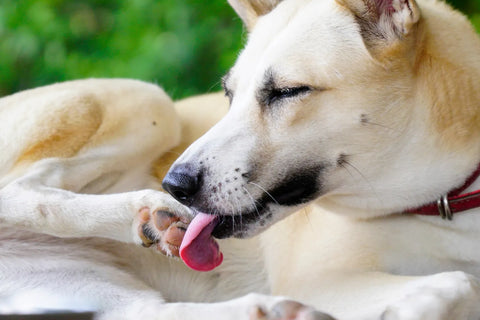
Why Do Dogs Lick Their Paws?

Why Do Dogs Whimper & Make Noises in Their Sleep?
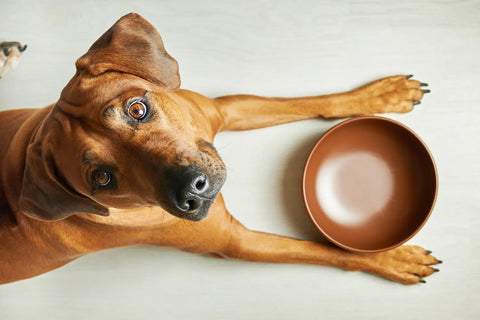
Healthy Vet-Approved Homemade Dog Food Recipes
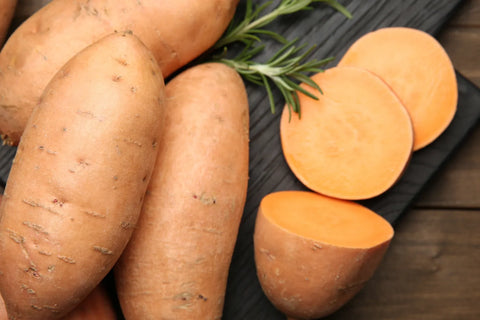
How To Cook Sweet Potatoes for Dogs
